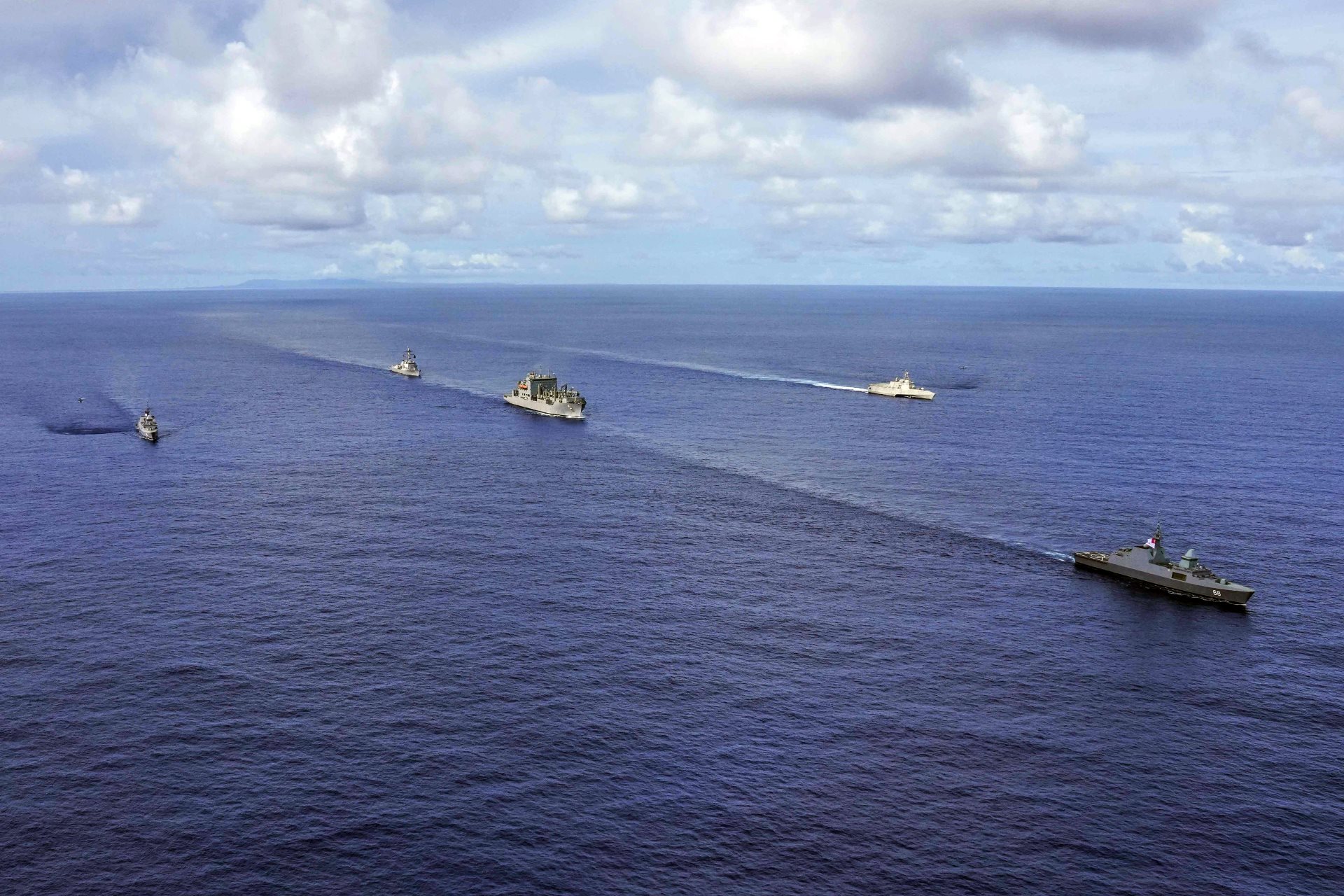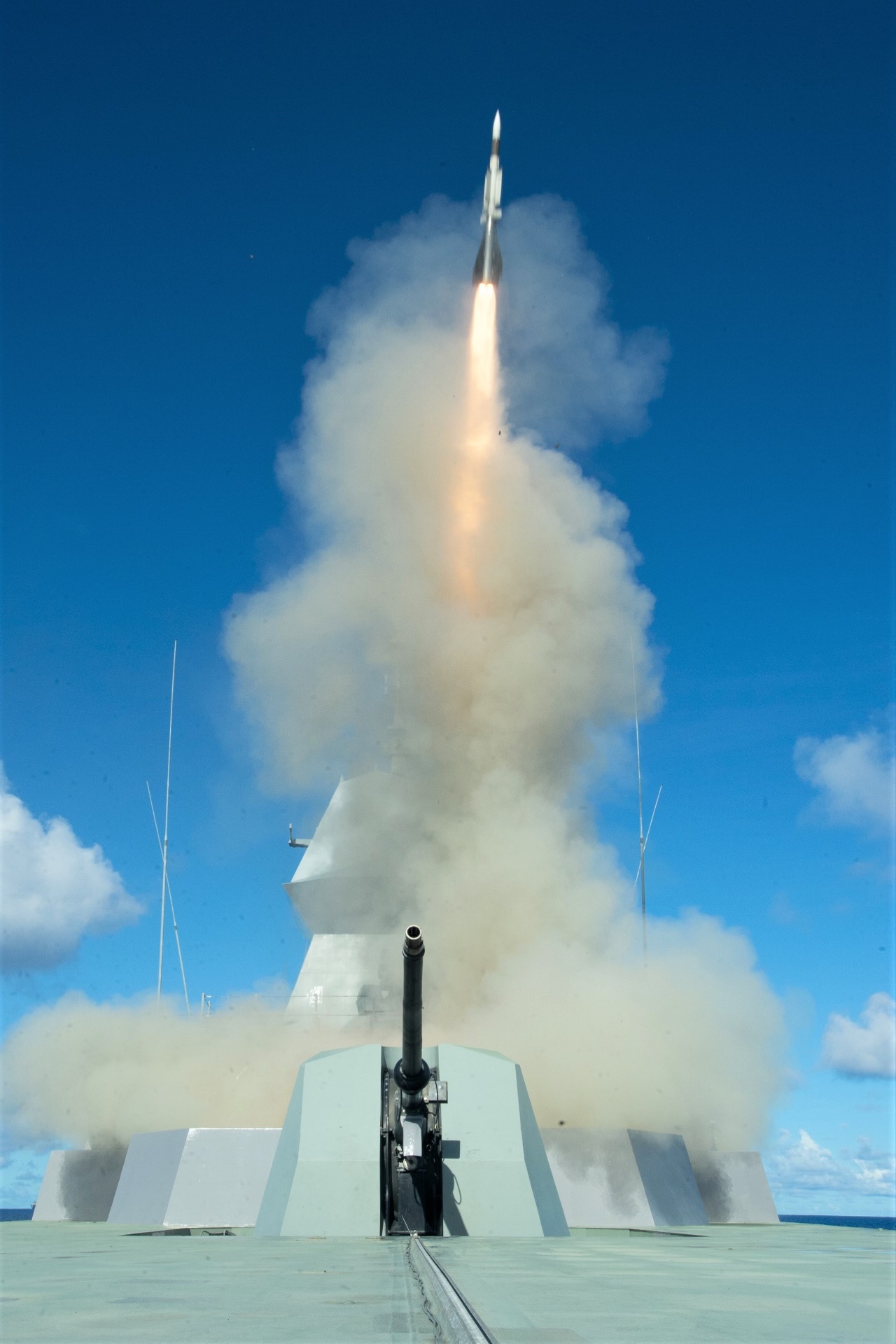OPS & TRAINING
WHY FORGING SABRE IS ONE OF SAF’S MOST COMPLEX EXERCISES
08 Oct 2019
SAF tests smarter technology to enhance its sense and strike integration at the biennial exercise.

A flurry of activity, the Command Post (CP) is the nerve centre of all Singapore Armed Forces (SAF) operations.
At Exercise Forging Sabre (XFS), this is where about 80 commanders and battle personnel conduct multiple missions concurrently. This includes target tracking and air strikes on enemy targets.
This year's XFS is held from 30 Sep to 10 Oct at the Mountain Home Range Complex in Idaho, United States. Here's what makes the exercise one of the SAF's most complex.
1) Smarter Tech Tested At CP
XFS 2019 sees the introduction of a new software that detects and marks enemy targets automatically from a live video feed. The feed is taken from a Heron 1 Unmanned Aerial Vehicle carrying out surveillance.
Named the Automatic Target Detection (ATD), the software is being trialled for the first time at the CP this year. It uses artificial intelligence to locate both static and moving targets. For instance, the ATD is able to pick out enemy trucks from a large cluster of civilian vehicles.
Previously, operators would have to analyse these images manually, relying on their own experience and knowledge to pick out the enemy.

The CP today also predicts the future location of moving targets more accurately, with the enhancement of its Target Look-Ahead software.
The software estimates where a target is headed and how long it will take to get there. It even takes into account "no engagement zones" when recommending possible areas to strike. These are areas marked by the CP to, for example, reduce collateral damage or civilian casualties.
The algorithm for this software and the ATD software were designed by engineers from the Defence Technology Community.
Defence Science & Technology Agency engineer Joshua Lim said: "The operators in the CP have to continuously man the Heron 1 video feed for long hours.
We wanted to automate this process through technology, so that it is less tedious for them and they have an enhanced awareness of the situation."

Air Director Colonel (COL) Aldrin Tan, who commands the CP, added: "The software help the battle staff come to decisions faster and recommend them to me.
"I'm happy to say that the information has been passed from intel to the strike (teams) seamlessly through the system. From there, everybody talks off the same page and there is no ambiguity. With this shared awareness, decision-making is a lot faster."

2) Multiple Assets Working Together As One
Helping to ensure that the CP receives useful information from the Heron 1 is the Air Imagery Intelligence Expert (AIRIX).
Based in a remote Ground Based Unit (GBU), AIRIX Military Expert 4 (ME4) Joyce Tan analyses images from the Unmanned Aerial Vehicle (UAV) and cues the pilot to investigate areas of interest. The pilot then works with the CP to carry out lasing of targets when needed.
"Things are very dynamic at Exercise Forging Sabre and they move fast at times. We are able to carry out different flight profiles that hone our skills and (this) teaches us to work as a team," said ME4 Tan.
While the CP may deploy the fighter jets to carry out complex strikes, they are still limited in where they can drop bombs – as they have to watch out for areas close to friendly forces or civilians.
This is where the Apache AH-64D attack helicopters come in.
As the Apaches launch missiles or rockets instead of bombs, they can attack within a smaller zone, said pilot Lieutenant (LTA) Ong Yan Zhuan.
"This gives the CP greater flexibility (in carrying out missions), especially in urban areas where friendlies and enemies can be in close proximity," he added.

3) Ramping Up Of Strike Capabilities
The 11-day exercise sees the progressive ramping up of mission complexity.
The F-16C/D and F-15SG fighter jets begin with an objective to hit just two targets, but this gets more challenging gradually.
It culminates in the fighters flying in a four-plane formation to take out six targets simultaneously – ensuring that enemies have no time to escape.
As the F-16C/Ds are only equipped to lase one target each, the Heron 1 UAV and Commandos on the ground play an important role in this strike mission.
"The F-16 drops a self-guided lased bomb and the Heron 1 lases (for) another bomb so that we can drop multiple bombs at one time," explained pilot Captain (CPT) Nigel Wong.
"The fighters function as the tip of the sphere. We get the weapons on time and on target but we are the last of the strike chain. We will always work with the Heron 1 and the Commandos who go in before us."

ALSO READ IN OPS & TRAINING

Exercise Wallaby 2025: To see better, shoot faster
31 Oct 2025
The SAF focuses on complex strike missions and multi-domain integration in Exercise Wallaby 2025, the 35th edition of its largest unilateral overseas exercise.

Ex Wallaby 25 – Greater Integration and Complexity
25 Oct 2025
The 35th edition of the SAF’s largest unilateral overseas exercise is an opportunity for expanded scale and deeper integration towards an effective, networked fighting force.

Ex Forging Sabre ramps up use of unmanned assets in integrated strike operations
12 Sep 2025
In this 10th edition of Exercise Forging Sabre, the SAF sharpened its cutting edge for the dynamic modern battlefield, with expanded integration between manned and unmanned platforms.




